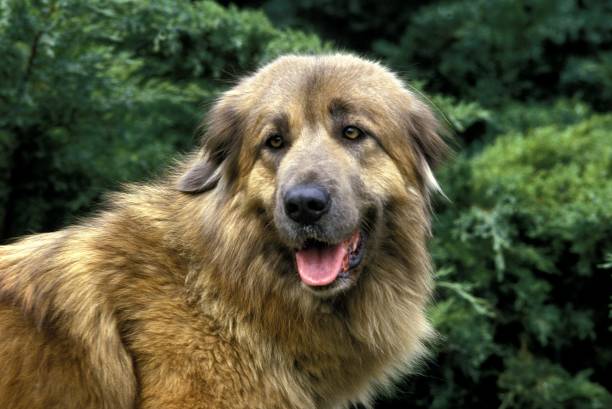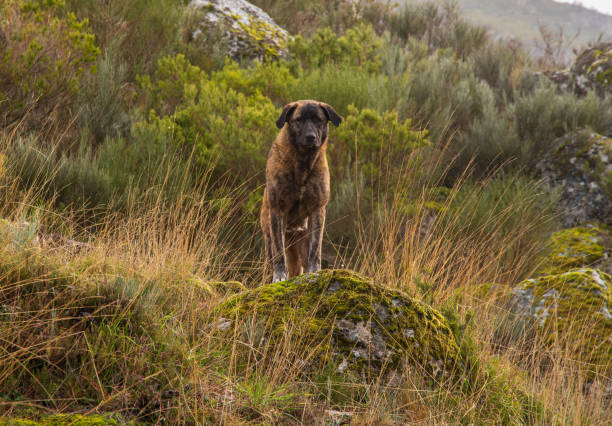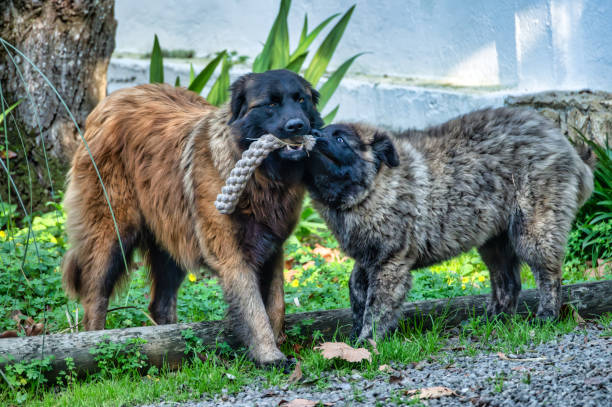Estrela Mountain Dog

Breed History:
The Estrela Mountain Dog is one of the oldest breeds in the Iberian Peninsula, originating in the Serra da Estrela mountains of Portugal. Bred for centuries as a livestock guardian, it was used by shepherds to protect flocks from wolves and thieves in the rugged terrain.
The breed developed naturally with little outside influence, resulting in a hardy, independent, and highly protective dog. Although it remained largely unknown outside Portugal for many years, breed enthusiasts worked to standardise and preserve it in the early 20th century. The Estrela was officially recognised by the Portuguese Kennel Club in the 1930s and later by the Fédération Cynologique Internationale (FCI).
Considering adopting a Estrela Mountain Dog or a similar flock guardian breed? Check out our page "How to look after a Kurdish Kangal" detailing what to consider before adopting and our recommended products for a Kurdish Kangal and other flock guardian breeds.
|
Gender |
Height |
Weight |
|
Male |
65-72 cm |
40-50 kg |
|
Female |
62-69 cm |
30-40 kg |
Size – Large
Life Expectancy: 10–14 years

Breed Appearance:
The Estrela Mountain Dog is a large, powerful, and rustic-looking guardian breed with a broad head, deep chest, and strong bone structure. It comes in two coat types—long and short—both with a thick, coarse outer layer and dense undercoat suited for harsh climates.
The breed often has a distinctive hooked tail, black mask, and colours such as fawn, brindle, wolf grey, and yellow. Its dark, oval eyes convey an alert and serious expression. The Estrela's imposing appearance reflects its guardian instincts.
Breed Type – Guardian/Livestock Protector:
Traditionally bred to guard livestock and property, the Estrela Mountain Dog is deeply loyal and protective. It forms strong bonds with its family and is particularly gentle and watchful with children.
It is naturally suspicious of strangers and does not typically warm up to outsiders. Its territorial and courageous nature make it an outstanding guardian. However, it is not an aggressive breed without cause and is calm and steady when well socialised.

Training:
The Estrela is intelligent but independent, traits that served it well as a solitary guardian. Training requires patience, consistency, and firm leadership, ideally starting from puppyhood.
Positive reinforcement works best, as harsh methods can cause resistance or fearfulness. Socialisation is critical—this breed must be exposed to various people, animals, and situations early to develop into a balanced adult.
Health & Care:
Generally, a healthy and robust breed, the Estrela Mountain Dog has few widespread genetic issues. However, due to its size and weight, it may be prone to:
-
Hip dysplasia
-
Elbow dysplasia
-
Gastric torsion (bloat)
-
Entropion or ectropion (in some lines)
Routine veterinary care, joint health monitoring, and a proper diet tailored to large breeds are essential. Moderate but regular exercise helps prevent obesity and related problems.

Living Conditions:
The Estrela Mountain Dog is best suited for rural or suburban homes with large, securely fenced areas. It does not thrive in small apartments or busy urban settings due to its size and guarding instincts.
It prefers a cooler climate and should always have access to shade and water in warm weather. The breed can live both indoors and outdoors, though it prefers to stay close to its family and territory.
Exercise:
Despite its large size, the Estrela does not require excessive activity. Daily moderate exercise, including walks, roaming in a secure yard, and mental stimulation, is sufficient. Overexertion should be avoided during puppyhood to prevent joint issues.
The breed is not high-energy but needs purpose—whether guarding, patrolling a property, or interacting with its people—to stay content.
Grooming:
Grooming needs vary based on coat type. Long-coated Estrelas require brushing several times a week to remove dead hair and prevent matting, especially around the tail, ears, and legs. Short-coated types need weekly brushing.
The breed sheds seasonally, especially in spring and fall. Regular ear cleaning, nail trimming, and dental care are recommended. Baths are needed only occasionally, as the breed’s coat naturally repels dirt.

Advantages:
-
Excellent livestock and property guardian
-
Loyal and devoted to family
-
Calm, steady, and confident temperament
-
Tolerant and gentle with children in its family
-
Hardy and adaptable to cold weather
-
Low maintenance outside of shedding season
Disadvantages:
-
Naturally wary of strangers—needs socialisation
-
Not suited to apartments or urban living
-
Strong-willed and requires experienced handling
-
Heavy seasonal shedding, especially in long-coated types
-
May be aggressive toward unfamiliar dogs
-
Needs space and a securely fenced yard to thrive

